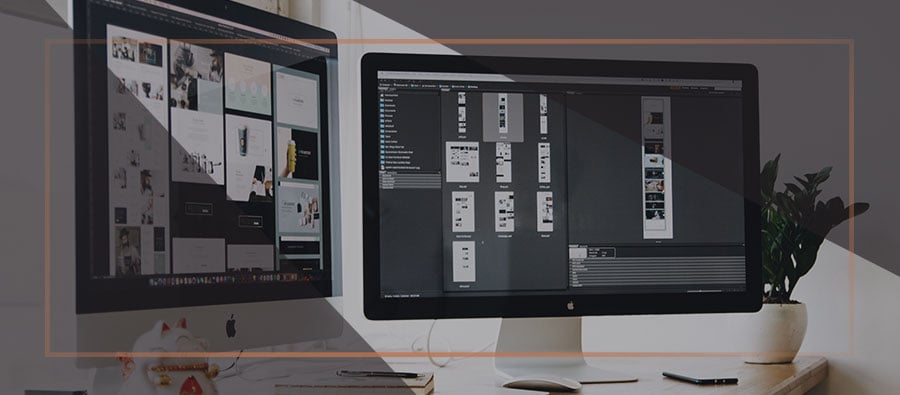
Creating graphics can be a daunting task for anyone just starting out in the world of web design. The graphics are very important to the success of a website because they are what keeps your audience engaged. People may come to your site for information, but the images are what truly captivates them. Images set the whole tone of your site; within a few seconds, people can determine whether they even like your site and think it is worth exploring simply based on a few images.
Basically, the use of images can be the determining factor between a great website and a terrible one. Below are a few tips to keep in mind when designing graphics for a website.
QUALITY OVER QUANTITY
One huge mistake people make is thinking that they can just add images to a website and it will automatically look great. While images help break up the monotony of text blocks throughout a site by adding color, you must make sure they are the correct images, and not just have them just to have them.
You want your images to be of high quality. There is nothing worse than having out of focus or blurry images on your site. People should not be able to physically count the pixels in your images. You want your images to be taken with professional equipment — even with today’s standards, images taken on smartphones are often still not up to par. You want people to be captivated by your images instead of talking about how blurry they are.
MAKE THEM POP!
You want the images on your site to grab the audience’s attention at a quick glance, and keep the reader engaged and captivated the entire time. One of the most important images to focus on is your Hero Image on your homepage. This is the first thing someone sees when they visit your site and you want it to really draw in the reader and motivate them to continue exploring the rest of your site — if you don’t engage them early on, you run the risk of losing them. Try using images with contrasting colors or interesting compositions to really demand their attention.
AM I IN THE RIGHT PLACE?
Another important tip is that all your images must be relevant to the data you are offering. The last thing you want is for someone to visit your page and second guess whether they are in the right place or not because there is a disconnect between your images and content. The images should be an extension of your content and be appropriate for each topic depicted. You want your images to match the content, so your audience gets a clear illustration of who you are or what it is you do.
SET THE MOOD
When selecting images for a website, you want them to look like they were all taken by the same person and have a similar point of view. This can sometimes be difficult when you are stuck using stock imagery, but there are ways to make it work. You can always edit the images so that they all appear to be cohesive. You can play with color, contrast, and saturation, but whatever you do to one image, make sure you match with the others to keep a consistent tone. You don’t want one to stand out and clash with the rest; this can be jarring to the viewer and ruin their experience while visiting your site. It is also important to always do some sort of editing if you do use stock images so that they appear to be more authentic.
LOADING…
The last thing you want to happen after you have poured your blood, sweat, and tears into your brand-new website is for someone to click on your page and click out only a few seconds later, without even having seen your website, because it would not load fast enough. Today’s society is used to getting instant gratification, so if your website is too slow to load, chances are people will not last long enough to even view it.
A huge factor to your website speed is the size of your images. You need to make sure that you optimize your images for web. Keep the KB count on each image low; it can be a bit higher for some of the larger images like your Hero or Header images. Saving the jpegs at a level of “high” should be good enough to make the images an ideal size. This will keep your website loading fast and you won’t have to test the patience of your viewers.
DON’T SAY I DIDN’T WARN YOU
Remember, captivating the audience and making it easy for them to take in the information is key for your site’s success. Keep these 5 tips in mind when building your next project and watch your website come to life with engagement.
